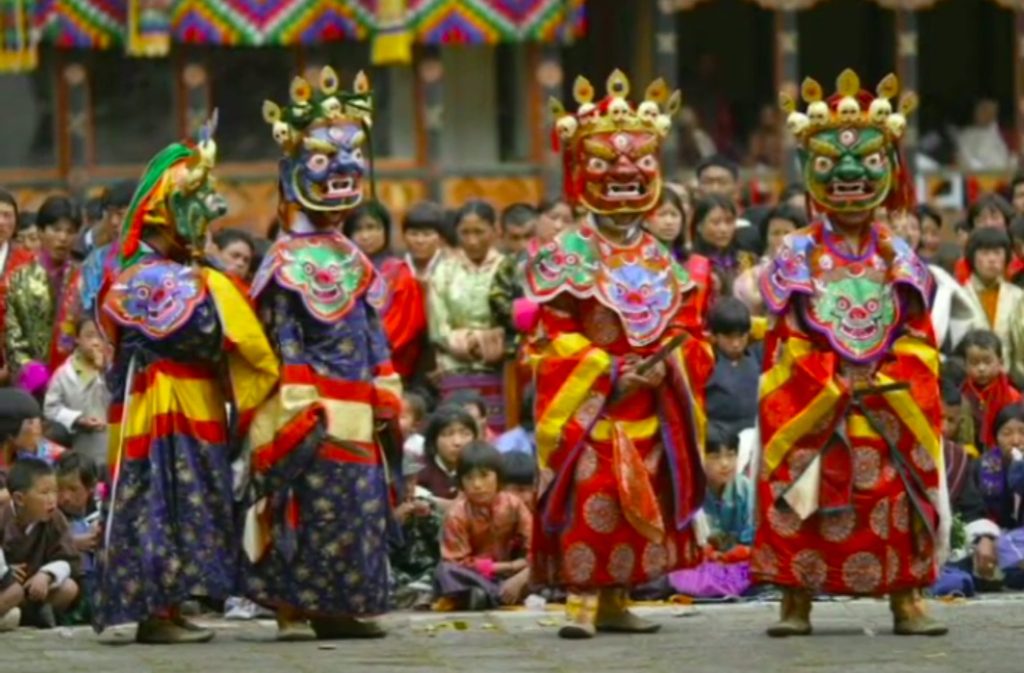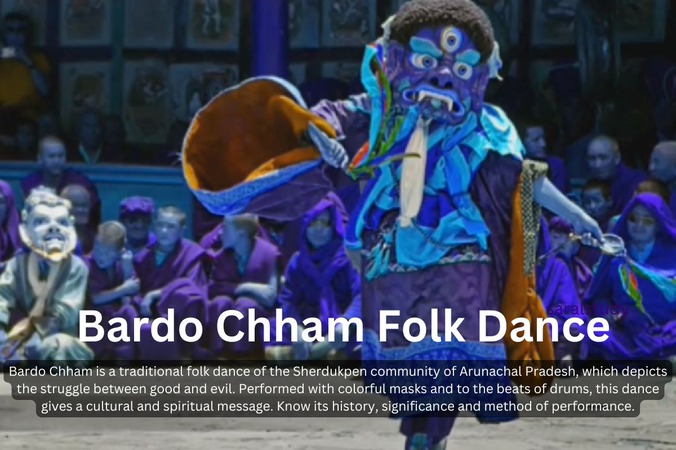Bardo Chham dance is a famous folk dance of the state of Arunachal Pradesh, India. This dance is a traditional dance performed by the Sherdukpen community there. The Sherdukpen community believes that the effect of man’s deeds remains even after his life and death. This dance depicts the struggle between good and evil based on this belief.
Meaning of Bardo Chham:
The meaning of Bardo Chham dance is ‘the spiritual journey between death and rebirth’. It is based on buddhist belief.
Word by word meaning of Bardo Chham dance
- Bardo: In Tibetan Buddhism, “Bardo” means the state between death and rebirth.
- Chham: In Tibetan language, “Chham” means dance.
History of Bardo Chham
This dance symbolizes the teachings given by Guru Padmasambhava, also known as the Second Buddha. His teachings were discovered as a hidden treasure by the great Buddhist master Terton Karma Lingpa and have been spiritually preserved since then.
Theme and significance of the dance:
- This dance is based on the stories of good and evil.
- Inspires people to live a virtuous life and stay away from sinful acts.
- The fight against evil forces is displayed through dance.
How is this dance performed?
- The dancers wear colourful masks that symbolize different animals.
- The dance is performed to the beat of a large frame drum, which is played with a wooden stick.
- The expressions and dance postures of the dancers are designed to convey a spiritual message to the audience.

When is this dance performed?
This dance is performed on festivals and special occasions. It is usually performed at religious and cultural events.
Conclusion:
Bardo Chham is not only practiced by the Sherdukpen tribe in West Kameng but also in all Himalayan regions where Buddhism is followed. “Bardo” means “intermediate state”, and there are six bardos in Buddhist philosophy.
This dance of Arunachal Pradesh depicts the events that happen in the intermediate state after death and before rebirth. This dance does not depict the monthly inauspicious events as may be the common perception.
The dance reflects the rich culture of Arunachal Pradesh. It also conveys the message of virtue, religion and enlightenment. This and similar traditional folk dances are an important means of preserving the cultural heritage of a particular community and imparting spiritual education to future generations.
Also Read: Arunachal Pradesh: The Land of Rising Sun

